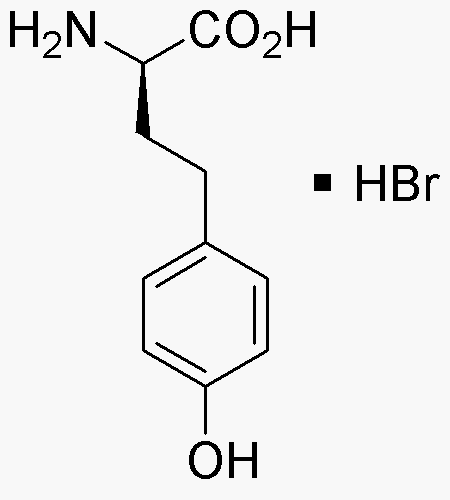D-Homotyrosine hydrobromide salt is widely utilized in research focused on:
- Pharmaceutical Development: This compound serves as a building block in the synthesis of various pharmaceuticals, particularly in creating compounds that target neurological disorders.
- Peptide Synthesis: It is employed in the production of peptides, enhancing their stability and bioactivity, which is crucial for drug formulation in the biotech industry.
- Antioxidant Research: D-Homotyrosine hydrobromide is studied for its potential antioxidant properties, making it relevant in developing supplements aimed at reducing oxidative stress.
- Cosmetic Applications: The compound is explored in cosmetic formulations for its ability to improve skin health, offering anti-aging benefits due to its role in collagen synthesis.
- Food Industry: It can be utilized as a food additive, where its antioxidant properties help in preserving food quality and extending shelf life.
General Information
Properties
Safety and Regulations
Applications
D-Homotyrosine hydrobromide salt is widely utilized in research focused on:
- Pharmaceutical Development: This compound serves as a building block in the synthesis of various pharmaceuticals, particularly in creating compounds that target neurological disorders.
- Peptide Synthesis: It is employed in the production of peptides, enhancing their stability and bioactivity, which is crucial for drug formulation in the biotech industry.
- Antioxidant Research: D-Homotyrosine hydrobromide is studied for its potential antioxidant properties, making it relevant in developing supplements aimed at reducing oxidative stress.
- Cosmetic Applications: The compound is explored in cosmetic formulations for its ability to improve skin health, offering anti-aging benefits due to its role in collagen synthesis.
- Food Industry: It can be utilized as a food additive, where its antioxidant properties help in preserving food quality and extending shelf life.
Documents
Safety Data Sheets (SDS)
The SDS provides comprehensive safety information on handling, storage, and disposal of the product.
Product Specification (PS)
The PS provides a comprehensive breakdown of the product’s properties, including chemical composition, physical state, purity, and storage requirements. It also details acceptable quality ranges and the product's intended applications.
Certificates of Analysis (COA)
Search for Certificates of Analysis (COA) by entering the products Lot Number. Lot and Batch Numbers can be found on a product’s label following the words ‘Lot’ or ‘Batch’.
*Catalog Number
*Lot Number
Certificates Of Origin (COO)
This COO confirms the country where the product was manufactured, and also details the materials and components used in it and whether it is derived from natural, synthetic, or other specific sources. This certificate may be required for customs, trade, and regulatory compliance.
*Catalog Number
*Lot Number
Safety Data Sheets (SDS)
The SDS provides comprehensive safety information on handling, storage, and disposal of the product.
DownloadProduct Specification (PS)
The PS provides a comprehensive breakdown of the product’s properties, including chemical composition, physical state, purity, and storage requirements. It also details acceptable quality ranges and the product's intended applications.
DownloadCertificates of Analysis (COA)
Search for Certificates of Analysis (COA) by entering the products Lot Number. Lot and Batch Numbers can be found on a product’s label following the words ‘Lot’ or ‘Batch’.
*Catalog Number
*Lot Number
Certificates Of Origin (COO)
This COO confirms the country where the product was manufactured, and also details the materials and components used in it and whether it is derived from natural, synthetic, or other specific sources. This certificate may be required for customs, trade, and regulatory compliance.


